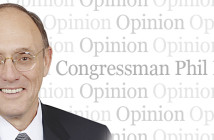By Scott Robertson
A few weeks ago, I wrote a piece for The Business Journal about the late, but better-late-than-never reaction by the Tennessee state government to the opioid crisis. In the weeks since, I’ve been working on a larger story about the problem, and one thing has struck me. Like most problems of magnitude great enough to warrant government action, it’s a problem so large and multi-faceted that government will struggle mightily to address it.
Consider these scenarios:
• A dentist prescribes 40 or 60 pills of an opioid-based pain medication to a patient. The dentist tells the patient what he has been trained to say: “If you feel it starting to hurt, take it before the pain gets bad.” The patient then begins taking the medicine at the first sign of discomfort, and ends up using the medication for a far longer period than is actually needed, thus developing a debilitating dependency.
• The same dentist prescribes the same 40 to 60 pills to another patient. The patient takes only four to six pills, because that’s what he or she actually needs to treat the pain. The rest of the pills sit on the shelf, where they are eventually discovered by another family member, who, using them without proper medical supervision, develops an addiction.
• A drug dealer who does business with clients in East St. Louis and Baltimore decides to expand his trade to the region. His most profitable product is heroin laced with fentanyl. In one year’s time, the rate of death by overdose in the region increases by more than 40 percent.
• A group of teenagers experimenting with opioids taken from a family medicine cabinet sits panic-stricken as a friend overdoses, becomes unresponsive and stops breathing. They do not call 9-1-1 because they are unaware of ‘Good Samaritan’ laws that will keep them safe from being arrested for being in a room with illegal drug activity if they are making a good-faith effort to save someone’s life in an overdose situation.
• A law is proposed to limit the dispensation of opioids to a very small number of pills in any given prescription. The intent is to limit the number of “left-overs” in medicine cabinets. However, the increased cost of multiple visits to constantly re-up the small-dose prescriptions makes the cost for legitimate longer-term pain patients, such as cancer patients, much more expensive – for some, prohibitively so.
• A team of first responders is called to the residence of an elderly woman living alone. She has apparently forgotten whether she took her pills, doubled up on her prescription, and is overdosing. She passes away. During her funeral, her home is burglarized by addicts or resellers who know she kept an ample supply of opioids in her home.
• That same team of first responders is called to a house where multiple overdoses have been reported in the past. Upon entering, they find an individual unresponsive on the floor. When they administer a dose of Narcan (naloxone) to combat the effects of the opioid, the individual returns to consciousness in a violently agitated state, as often happens. In the effort to subdue the individual and take him for further treatment, one of the first responders comes into direct contact with fentanyl and has to have a dose of Narcan administered to him as well.
• A drug store wants to do its part to help take left-over opioids off the street. It looks into working with local law enforcement to schedule a take-back day in which it will accept any number of pills from anyone, no questions asked. However, because of pre-existing regulations, the store finds out it must pay prohibitively large shipping and insurance costs in order to see that the drugs it takes in are disposed of legally.
• And finally, a woman who is pregnant becomes addicted to legally prescribed painkillers. She gives birth to a child who is born dependent on the drugs. Among that child’s first sensations are withdrawal symptoms.
We lump all these and more under one definition, the opioid crisis. Like all real problems, it is infinitely easier to say than to solve.
The good news is that every facet of this problem has a solution. The bad news is that our governments, on the national and regional levels, have a less-than-stellar record of solving our own problems of late. We voters tend to want every problem to have a simple solution. When it doesn’t, we regress to our own default positions, whether they be based on politics, our upbringing, or some other cultural factor. From that point on, anybody who doesn’t agree with us is wrong. And our elected officials follow our lead.
We can’t handle this problem that way. If you believe this is a law enforcement issue and not a family issue, you’re only half right. If you believe it’s a family issue and not an issue of commerce, you’re only half right. We need to be willing to deal with every facet on its own.
As I said at the outset, in beginning to address this complex issue, we are already too late for too many. One of the street names for fentanyl is “drop-dead.” We are long past our drop-dead date for choosing a new way of addressing this issue.




